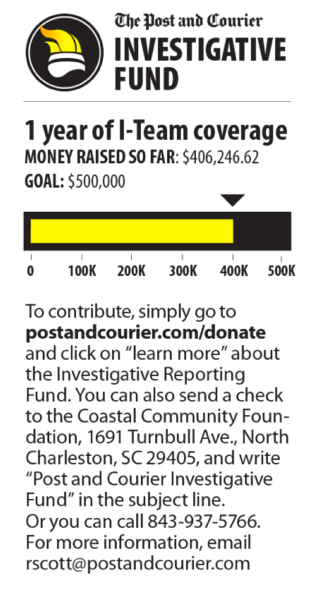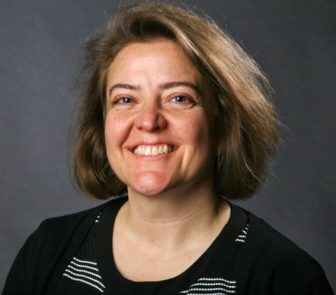
Image: Shutterstock
This excerpt focuses on lessons learned by The Post and Courier, a US newspaper in Charleston, South Carolina, after a 100-day campaign raised $1 million for a state-wide investigative fund. They were described by The Post and Courier’s executive editor, Autumn Phillips. The full story was originally published on Better News, a project of the American Press Institute and the Knight-Lenfest Local News Transformation Fund, and is reprinted here with permission. Some of the fundraising tools described depend on the US tax system, which offers major deductions for donations to nonprofits, but other tactics will have relevance worldwide.
Better News: What worked?
Autumn Phillips: The main lesson we learned is that showing the value of the work inspired people to donate.
Other lessons:
The editor’s column drove donations. We published it in print on the front page, attached it to the story online, and reproduced it in a subscriber-only newsletter. At the end of the campaign, we sorted and charted our donation data. We saw huge spikes on the two days we ran a column — on the campaign launch day and during Sunshine Week, [which is] a week when news organizations promote open government and access to public information.
We had success with a donor thank-you event. We tried a few iterations of virtual and in-person fundraising events, but the greater success came from a donor thank-you cocktail hour and newsroom tour for a small group. The one-on-one conversations and a chance to see the newsroom behind-the-scenes inspired some donors to give even more. Reporters and editors attended and socialized at the event that included a dozen of our top donors. The publisher, the executive editor, managing editor, and an investigative reporter gave speeches. Our director of development ended the presentation with a video and asked for continued support.
We created a director of development position, which is full time and reports to the publisher. This person organizes fundraising events, authors a newsletter to donors, and makes direct asks from foundations and individuals donors for our journalism initiatives. She also tracks donations and spends a lot of time in donor relations — sending thank-yous, making phone calls, and setting up renewals.

Every Sunday during the newspaper’s 100-day fundraising campaign, the Post and Courier updated print readers on their progress. Image: Screenshot
One-on-one sit-down conversations with potential donors brought in the largest gifts. Tip: Make a direct ask for a specific amount.
With each “Uncovered” story, we ran a “What it cost” box, including staff time, FOIA fees, and travel. The first story cost $38,000 to produce.
To date, we have raised more than $500,000 for the “Uncovered” project, which is enough to fund our investigative team for one year. So far, 1,600 people have donated. Donations ranged from $10 to $150,000. Most individual donations are between $100 and $250.
We also raised $660,000 to fund a three-person, three-year Education Lab to revisit the issues raised by our “Minimally Adequate” series, which highlighted the need for public education reform in South Carolina.
We are transparent about funding of specific journalism by foundations and large donors, but we allow individuals who donate through our website to remain anonymous to the public. For those willing to be named, we have published all the names of donors who have contributed more than $250. We have followed the example of The Seattle Times’ Education Lab by requiring large donors to sign an Editorial Independence statement at the time of their pledge, codifying that a donation does not grant special access to reporters or prior knowledge of our journalism. The Editorial Independence statement is also published on our website and fundraising materials.
Better News: What didn’t work?
Autumn Phillips: It turns out that 100 days is a long time for a campaign. In fact, it was too long. By the end of 100 days, we were starting to see some fatigue from the continued “asks.”
Virtual fundraising events were popular and well attended, but did not lead to donations.
The messaging in our pitch started out being about us, but making it about the community has been much more effective.
One of the most satisfying parts of this project was working with the community papers, using their local knowledge and our resources to shine a light on places where corruption is thriving. Early on, project editors reached out to smaller newspapers around the state with an assist from the South Carolina Press Association. Some of these new organizations joined the project later, after we received story tips in the communities they serve. Some of these newspapers were active participants in the reporting process, some simply provided tips, while others were happy to let us do the bulk of the work while jointly publishing the projects.
The key thing to know in advance is that the smaller papers have journalists working several beats, sometimes reporting, shooting photos, writing, and laying out the paper. It mostly comes down to the time and resources the partners can put into it.
The lightbulb really went off for us when we started crowdsourcing some of the larger statewide stories — asking each partner to make a few phone calls or comb through a database. It’s not an overwhelming amount of work, but adds to the scope immensely.
If we could go back to the beginning of the project knowing what we know now, we would look for more of those opportunities for partners to participate in bite-size ways to generate enthusiasm and buy-in.
The Table Stakes program helps organizations develop management initiatives, including diversifying their revenue streams and embracing new digital platforms. It works with the Knight-Lenfest Local News Transformation Fund, which is designed to strengthen local journalism by supporting journalistic excellence and serving the information needs of communities.
Additional Resources
From Traditional Journalism to Sustainable Journalism
Sustainability: A Survival Guide for Nonprofit Investigative Groups
Prospecting and Cultivation: A Fundraising Primer
Sustainability: Tips on Holding Live Events That Support Journalism

Autumn Phillips is the executive editor of The Post and Courier (Charleston, South Carolina). She was previously the newspaper’s managing editor and is a former board member of the News Leader Association (formerly the Associated Press Media Editors). She holds a Master’s of Fine Arts degree from Goddard College.
